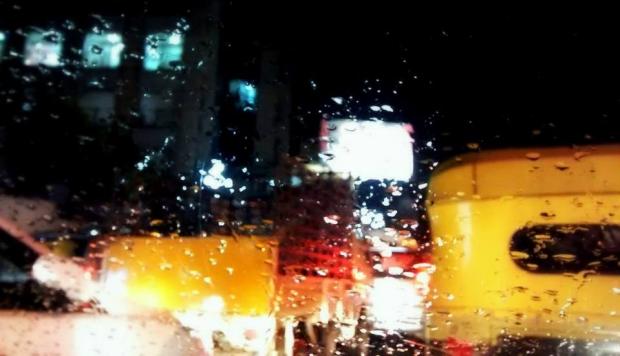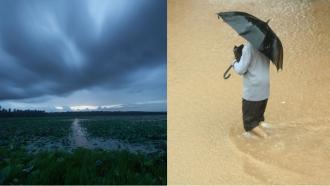
Photo: Vidisha Kulkarni / Research Matters
Bengaluru, apart from all its glory, is also loved for its pleasant weather and surprise light showers. But what makes up the raindrops in those beautiful showers? Are these raindrops formed when fresh river water evaporates and become clouds? Do salt water bodies like seas and oceans influence the constituents of the raindrops that fall in Bengaluru? A team from the Centre for Earth Sciences (CEaS) and Divecha Centre for Climate Change at the Indian Institute of Science, Bengaluru is exploring this relationship between rain and the role of ocean in driving it. Prof. Prosenjit Ghosh, a member of the study team and a Professor at the Centre for Earth Sciences, calls this research “the journey of moisture from ocean to the land".
"The ocean is a vast reservoir of water and provides moisture for rain in the subcontinent”, says Prof. Ghosh on how oceans influence rain. “The process involves distillation, which gets extremely complicated due to the influence of atmospheric and oceanic circulation. The presence of salt also dampens the rate of evaporation. The process of bringing fresh water to the surface layer by river and wind driven phenomena like “ocean upwelling” are active in the ocean, which modify the salinity of surface water and alter the intensity of cloud formation", he explains.
The team studied the rainwater isotopes – variants of elements with different number of neutrons - of Oxygen and hydrogen present in the raindrops over Bengaluru. They used numerical simulation to examine the difference in the compositions of these isotopes as the distance from the source (middle of the Arabian Sea) to the station. Previous studies on rainwater composition mainly considered intensity of rainfall and temperature at the place of condensation to explain the signature in rainwater. However, in this study, the researchers from IISc have mainly identified the role of moisture source parameters to explain the isotopic variations. Since Bengaluru’s rain is caused by both the moisture drawn from Arabian Sea and the Bay of Bengal with varying contributions during summer and winter time, it was a perfect setting to test how the source factor and the distance makes the difference in the isotopic signature recorded in rainwater.
The team collected a total of several rainwater samples using an automatic rainwater sampler from the IISc campus and compared the isotopic data with other meteorological parameters namely amount of rainfall, temperature and relative humidity. The global data bank of wind backward trajectories allowed them to pin point exact source of moisture for those air parcel. The isotopic signature of the water vapor reaching Bengaluru were predicted involving four processes; the evaporation at the source region, transport of moisture and rain over the sea and nearby land, recycling of moisture from the land where the rain evaporates again, and finally, the rain in the collecting station at Bengaluru.
The team found that different physical parameters, along with the sequence of processes, determined the final vapor composition. They observed that the partial rain over the sea and moisture recycling from nearby land were the major participants that modify the original isotopic composition of vapour generated from the seawater.
"The thought was new and not well accepted in the isotope hydrology community”, shares Prof. Ghosh. “Our study showed the importance of ocean and its physical state driving the isotopic signature of rainwater at Bengaluru station", he adds. The team plans to continue this research to find more such variability in other years when oceanic state changes by measuring Bengaluru’s rain.






